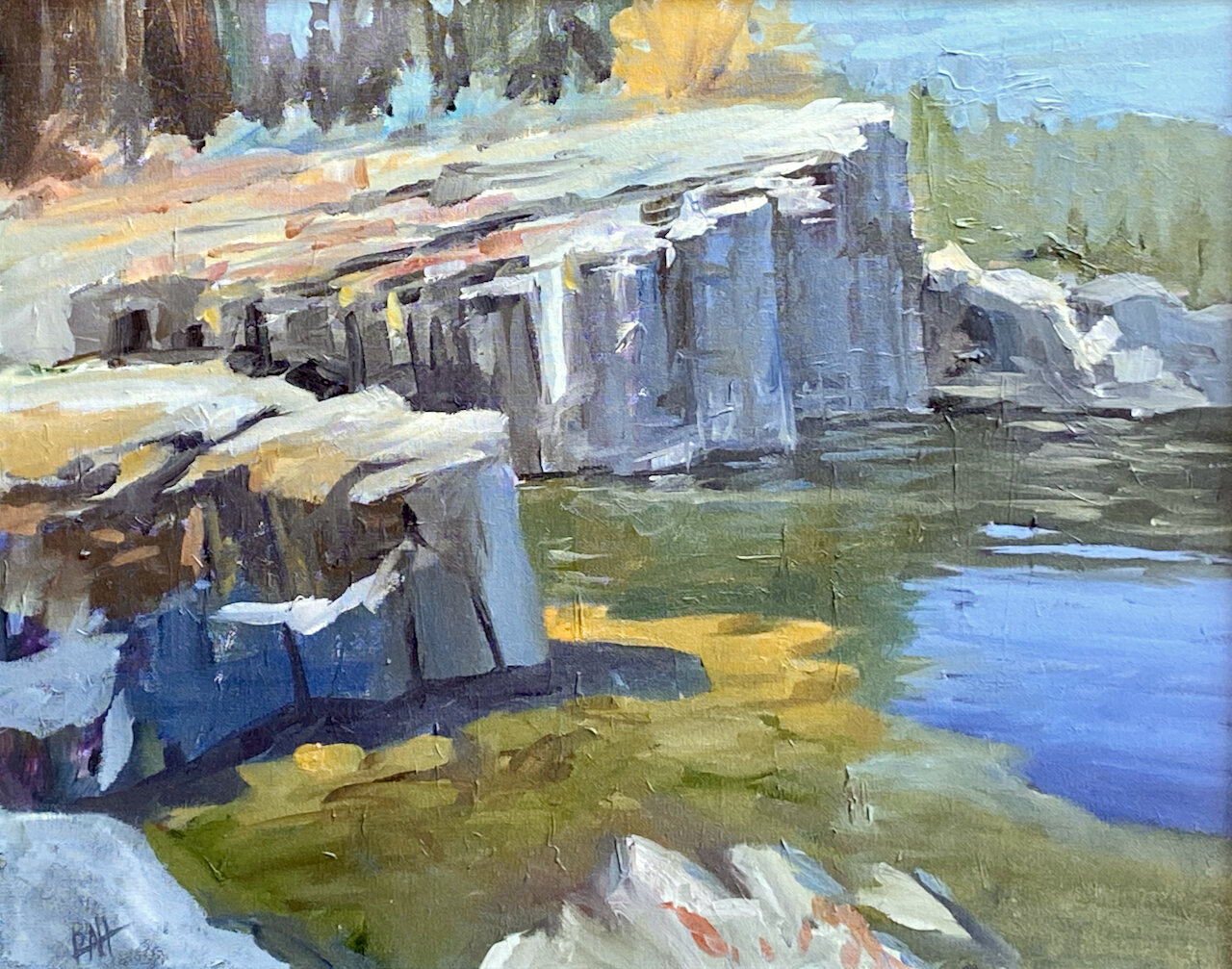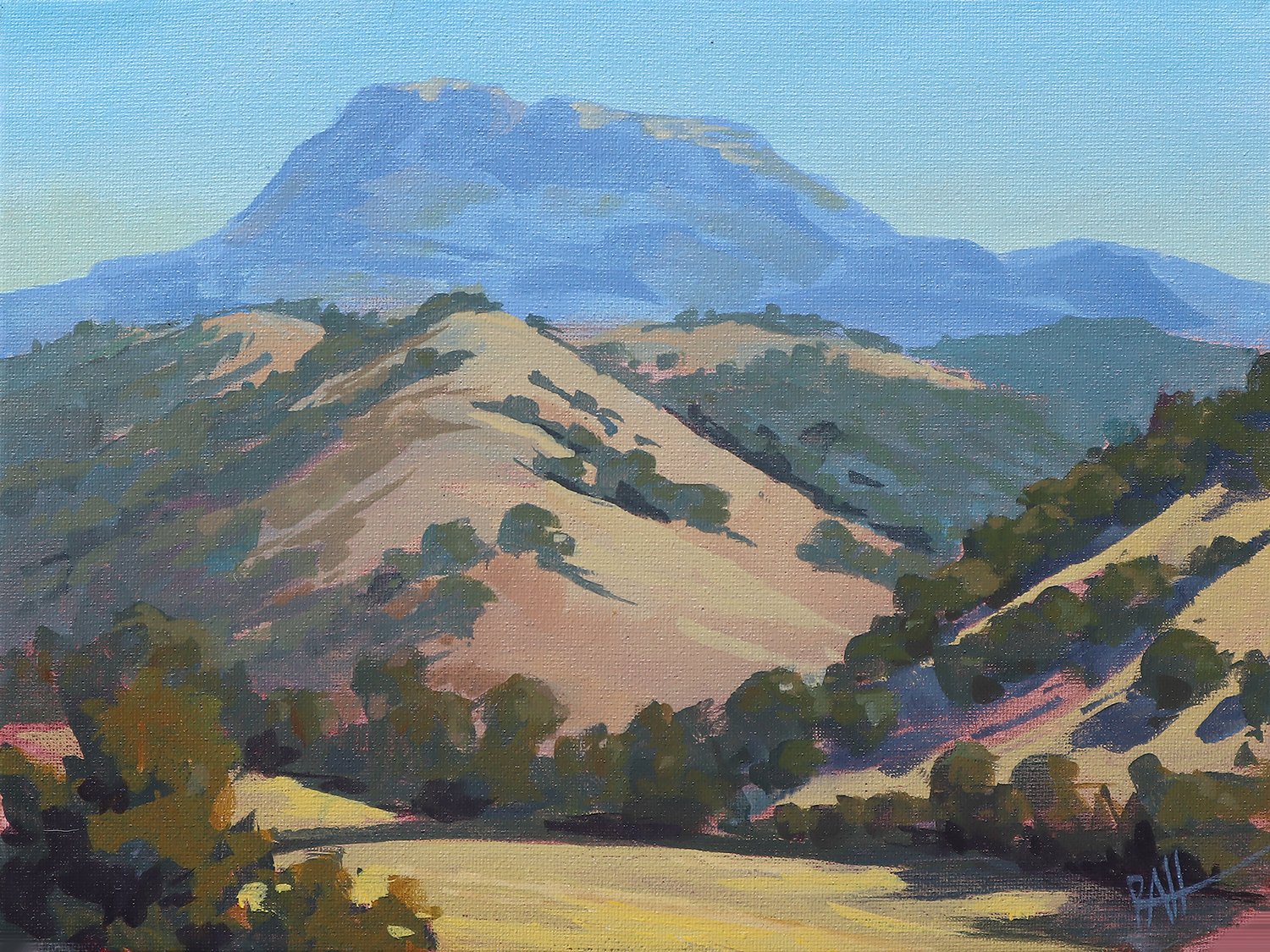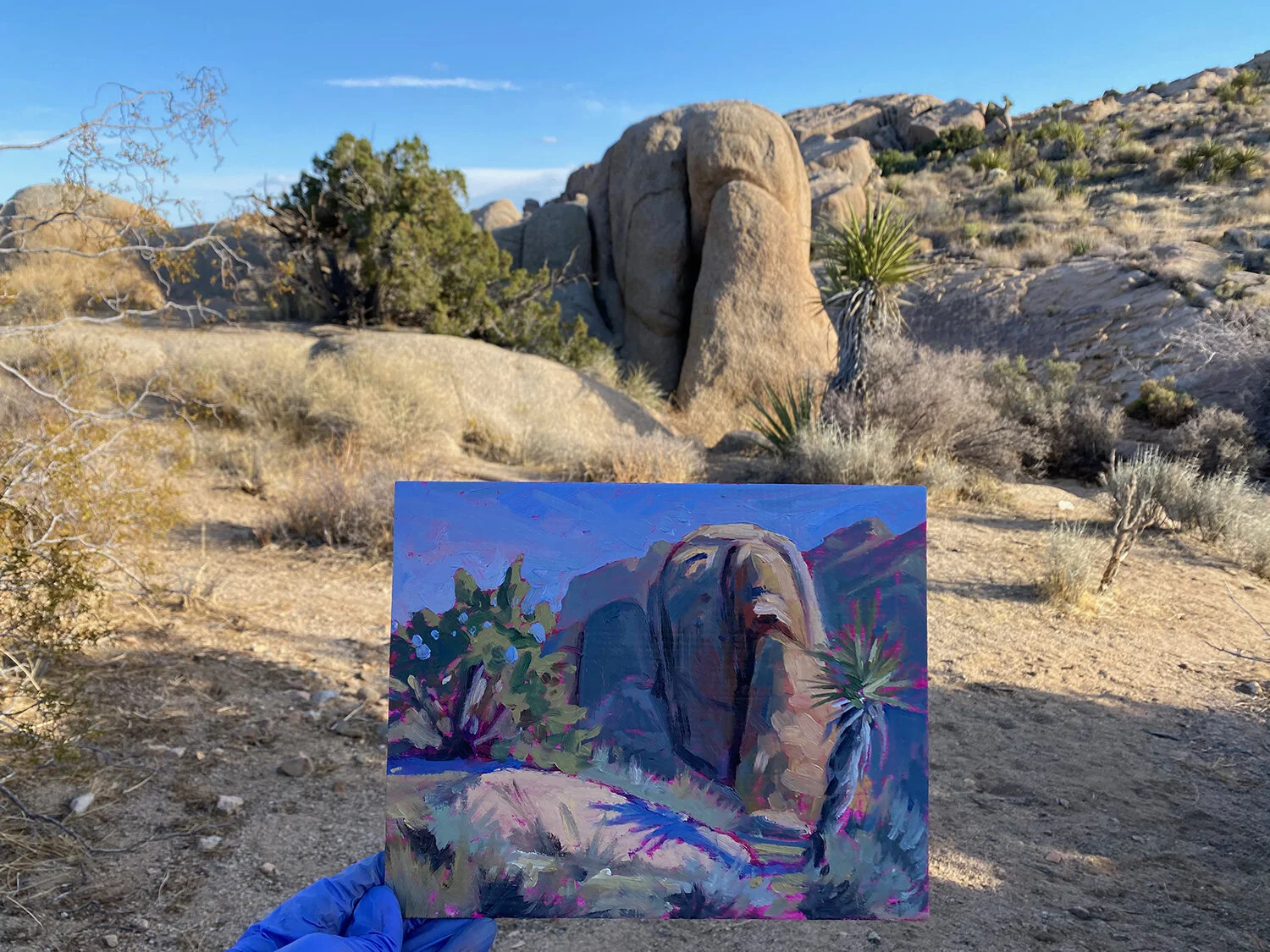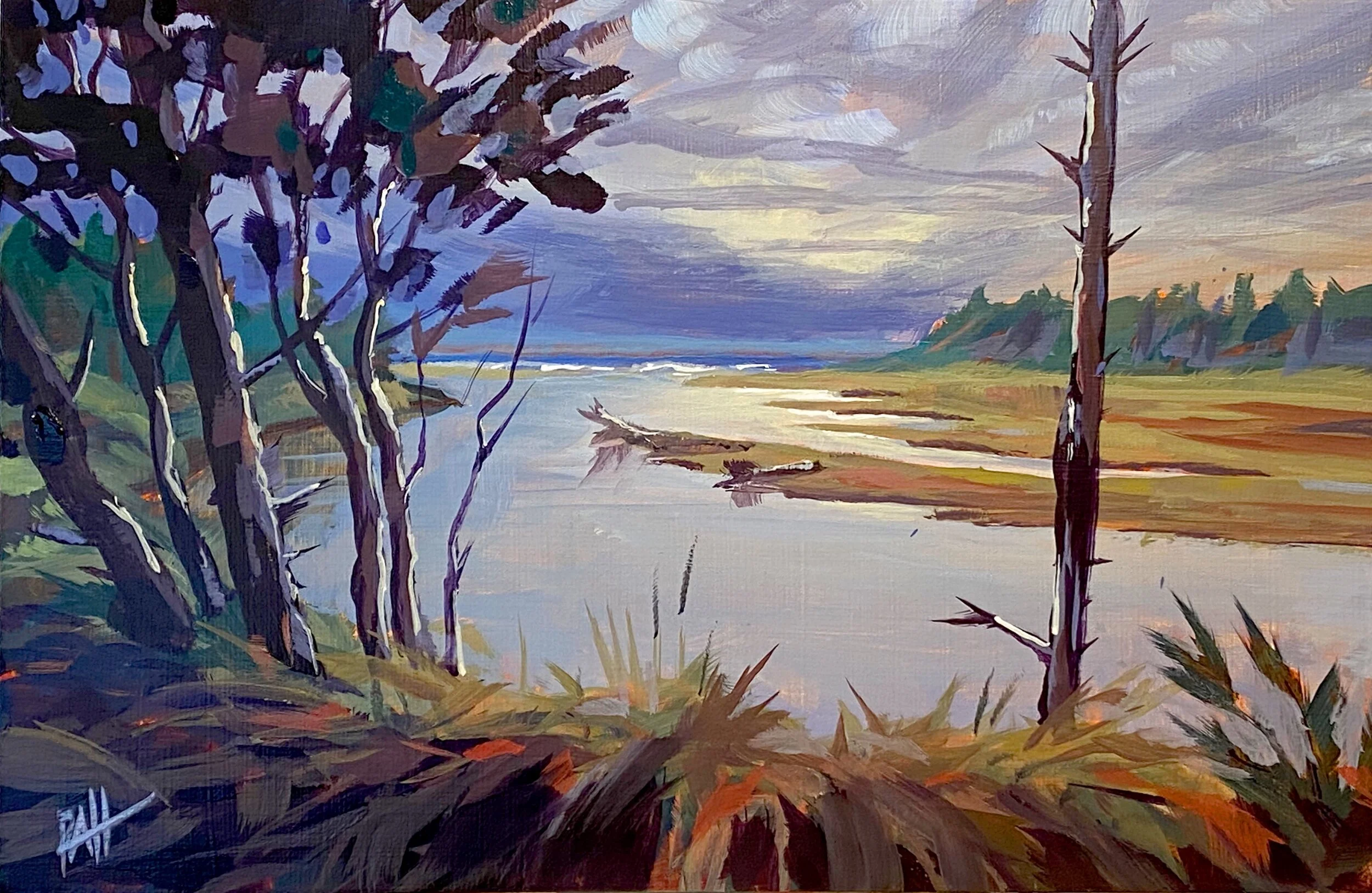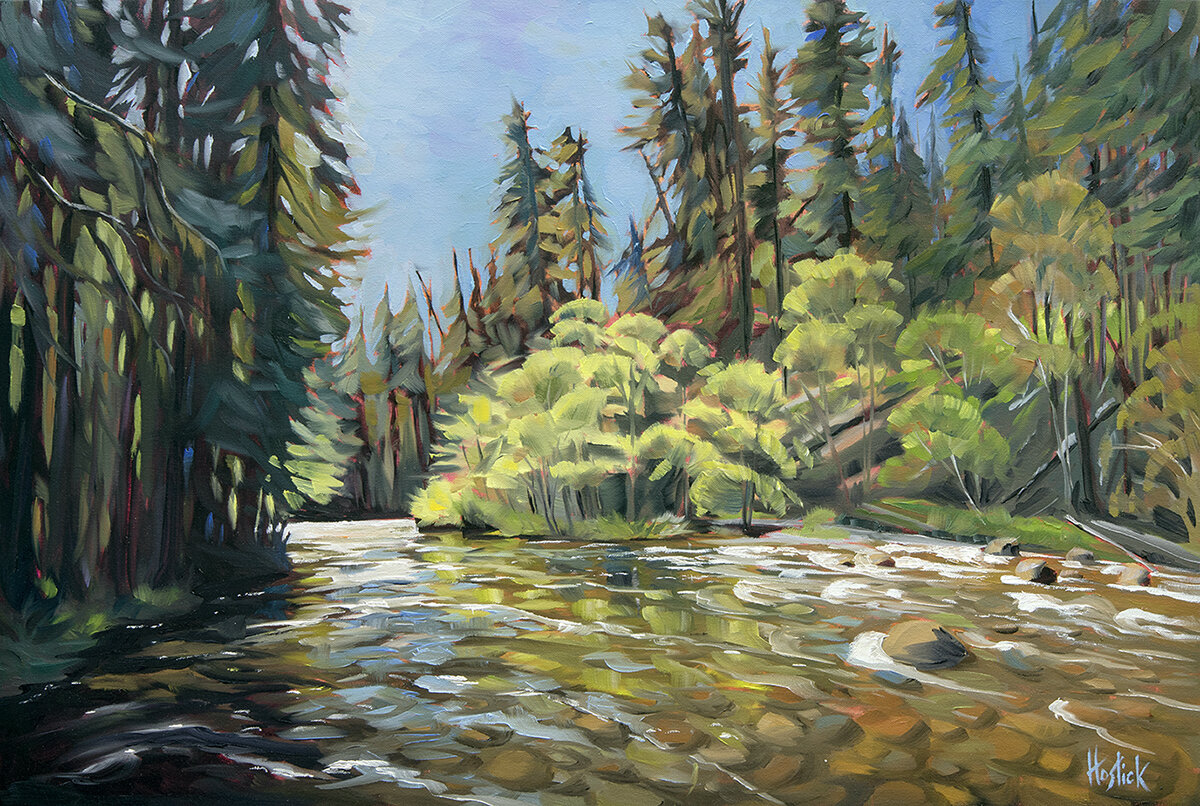I’m talking about plein air painting, of course. The idea is, you’re supposed to be creating art outside, in the open air, baking sun, smoke and wind, not at home. Whatever it takes. No matter what.
But there are definitely a few things to be considered first. Here’s a short list.
1. Pack light. Lugging heavy shit over slippery riverbanks is hard and a little risky.
2. Don’t climb up cliffs to get to that primo painting spot. Go around the long way, even if you have to lug your heavy shit half a mile.
3. Falling in the river is okay if it’s a warm day.
4. Yellow jackets like salami. Don’t keep any in your pocket while you’re painting.
5. Painting under bridges can be dodgy business. Watch where you step.
6. Try to use up as much of your paint as possible before it dries out by slapping it vigorously on your canvas.
7. When the light changes suddenly in the middle of a painting, refer to the sketch you wish you’d made.
8. Hydrate. It gets hot in the sun, and you might forget to drink while trying to capture the light before it changes.
9. Breathe. It’s easy to forget that, too.
10. Try to relax. Eventually the sun will go down and you can take a break.
Ok so I’ll just admit that I’m a newcomer to painting outside. Well not entirely. I got a portable French easel as a gift when I started painting intensively in 2003 or so and took it out on a few camping trips. I learned a lot and loved painting outside.
But the family and busy career intervened (more on that here) and the French easel collected dust for a while. Encouraged by some artist friends who are very talented plein air fanatics, this summer I finally resolved to give it a solid try.
In July I joined a well-known Oregon artist Erik Sandgren for the Oregon Coast Paint Out. His father Nelson Sandgren, also a well-known Oregon artist and art professor at Oregon State University, started the tradition over 40 years ago. Basically, a couple dozen painters converge on locations along the coast and paint together, in a loose fashion. At the end of the day, everyone gathers and displays the day’s work for critical feedback, casual commentary, and appreciation.
Generally, the “open” portion of the paint out follows a popular and typically booked-out workshop led by Erik in which formal training takes place with guided practice and direct feedback.
For the week-long open event, however, there is no application process, formal jury, or deadline, which makes the event especially relaxing and welcoming. Participants create artwork using a variety of media (watercolor, oil, acrylic, pastel, drawing, etc.), and come and go as they please. In other words, it was a perfect opportunity to meet some people and get re-acquainted with the practice.
I joined the group for a few days and had a great time. In stark contrast to my experiences painting in the Southwest a couple months prior, the weather was warm and pleasant, with hardly any wind. Just perfect.
Plus, it was just a joy, after the pandemic isolation, to be out and about meeting people. Being among other artists felt great since I’d hardly had that opportunity since making the leap just prior to the pandemic. I made a few new friends and learned a ton just observing people’s practice unfold in real time. Erik was incredibly welcoming and generous with his experience.
Even though it was just a few days, I was tired, but I might also say a little hooked.
So, in August I joined the Umpqua Plein Air 2021 event. This is a wonderful, well-organized event with a sign-up fee, rules of participation, and a juried exhibition taking place in and around the Umpqua Valley near Roseburg. Around 50 painters from all over the west joined the event, spreading out across flower farms, riverside parks, and viewpoints from the coast to the Cascades in Douglas County.
I camped out at Whistler’s Bend along the North Umpqua for the week along with a few other artists. We had a great time comparing notes and working hard. Maybe a little too hard, in retrospect.
Generally, I struck out early and painted all day, usually until sunset. After five days, I was pretty wiped out. We had some hot days, smoke from wildfires, and swarms of yellow jackets around camp, which probably contributed. Plus, I was stacking this on several weeks of busy events and adventures. No big surprise if I was ready for some couch time.
I might have also harbored some romantic images of the artist at ease, working leisurely at painting, birds singing in the background. That image is part truth and part fantasy. The birds really were singing in the background. Other than that, maybe it’s just me, but there’s an intensity to plein air painting.
The light changes fast, and you need to work fast. And really, light is everything: shapes, values, color, etc. You can make a sketch, which some people do, or you can get to work and catch what you can. I’ve taken the latter approach and it seems to work best for me. Besides, I appreciate the exercise in efficiency and expression, capturing what’s essential about the scene.
It reminds me of the Claude Monet show in Seattle I wrote about a couple weeks ago. He lugged some seriously heavy art supplies all up and down the coast around Etretat, France, working hard for inspiration and opportunity. The challenges, intensity, joys and frustrations were evident in his letters. It wasn’t all songbirds and afternoon naps in his day, either.
The deadline to drop off your three best works was Friday at 5pm. With the input of some other artists and bystanders I picked the best three from among the dozen paintings I’d made over what amounted to about four days, framed them up on a picnic table, and felt accomplished.
In truth, the juried aspect of the show wasn’t especially important to me. I wanted the experience, the challenge, and the chance to connect with other artists. As a bonus, the juror, Barbara Jaenicke, is a wonderful artist and presented a very educational demonstration the following day. Her eye and skill made it all look easy.
A week later I found out I’d been awarded third place, a purchase award, and that all three pieces received awards of distinction. It was a wonderful surprise. Maybe hard work is what it takes, even if it does look easy.
In case you’re curious, the best plein air works from this summer are now available. Here’s a link to a new collection of this summer’s plein air paintings, and a couple of other locations.
All this talk of summer makes me a little wistful for the warm days, but in the meantime I hope you’re all having a wonderful fall! Thanks for staying in touch.

